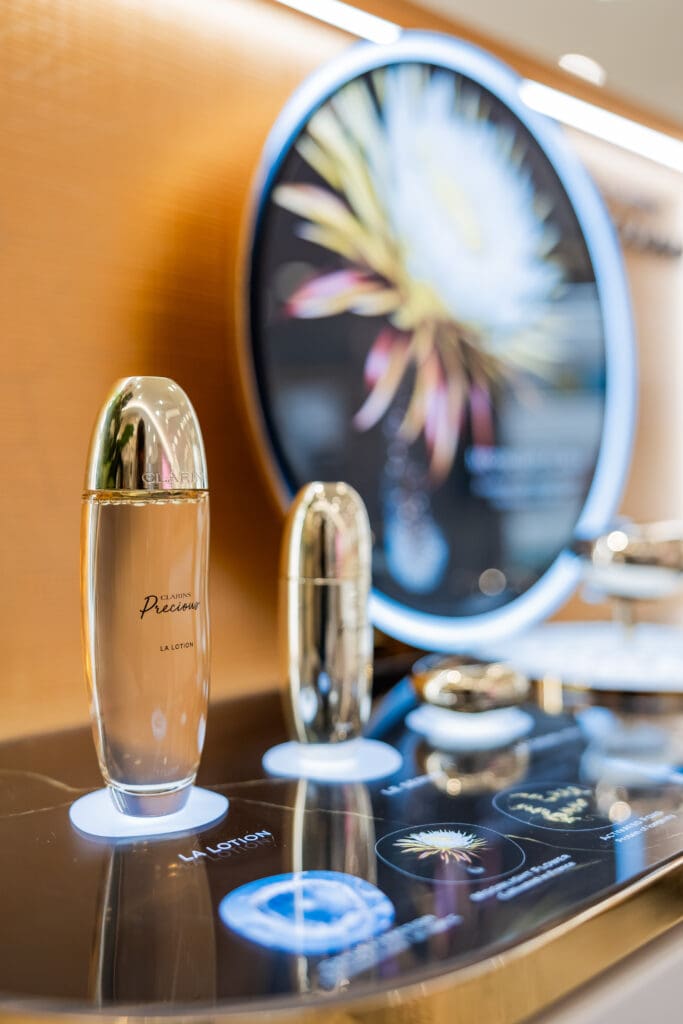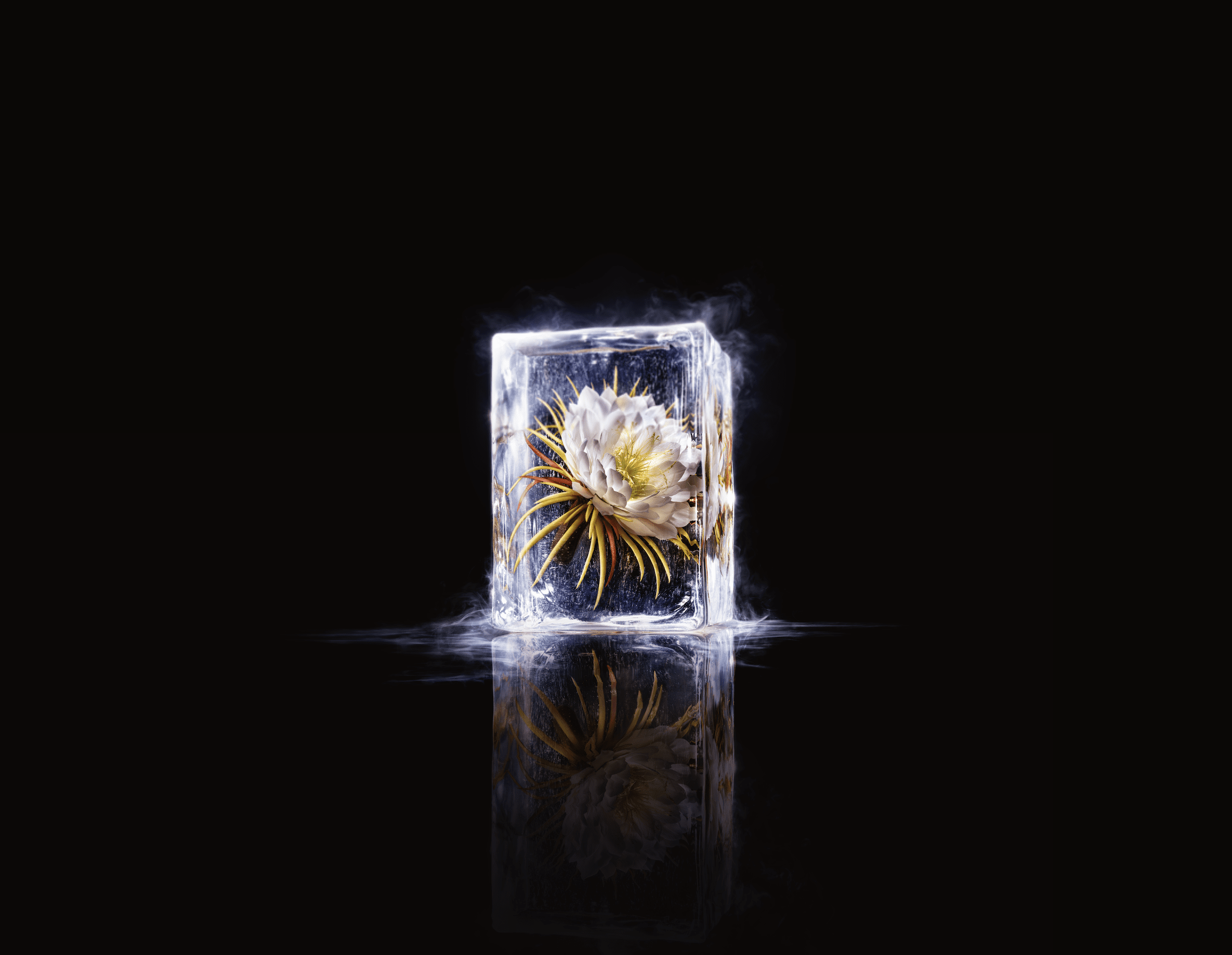What is it with French brands and flower-based skincare? Barely a day passes without a new serum based on a rare and precious bloom being announced from la République. Clarins’ director of responsible innovation, Marie-Helène Lair, says it’s cultural. “In Europe and Northern Europe we have great traditional usage of essential oils and plants as medicine,” the pharmacist and herbalist explains. “Previously it was empirical—you don’t know why it works, but it works—but now we know the content of the leaves, stems and roots, and which part we have to collect and make extracts to produce specific drugs.”

Caroline Nègre, YSL’s beauty scientific director, says there’s also some savoir faire that comes from making perfumes. “For YSL because we are a fragrance brand and we have this long heritage with Monsieur Saint Laurent and the jardin, we have this expertise with botanicals and what we know on the science is that side is that certain things cannot be synthesized,” she says. “And we know in the way we create our formula and blend, we tend to combine those botanical ingredients with what we called the dermactives—so, for example, saffron with hyaluronic acid.”
Clarins’ latest launch, Clarins Precious, contains the moonlight flower, a type of cactus that’s originally from Central America “To be pollinated, these flowers need a specific bird coming at midnight, seduced by the scent of vanilla,” says Lair. In the wild, these plants bloom rarely—sometimes just once every 20 years.
It’s in Brittany that Clarins’ moonlight flowers are organically cultivated, in greenhouses that contain cacti from all over the world and birds too, so that the entire ecosystem is reproduced. Immediately after harvesting, the plants are frozen to a temperature of -196 C in order to preserve the key ingredient, a protein called FOXO, which is encoded by the FOXO gene.
“There have been many scientific publications about the FOXO gene—a longevity gene,” Lair says. “It works in very young skin and doesn’t in older skin, so we tell the gene, ‘Hey … you have to work as if the skin is 20 or 30 years old.’” This leads to an increase in production of collagen, which keeps the skin firm, plump and unlined. The range includes a serum, lotion, cream, rich cream and eye cream, and you can also buy an application tool that helps the cream be better absorbed. The moonlight flower is complemented by peptides to help the production of elastin and fibroblasts, both of which help skin behave younger.
In its Or Rouge range, YSL uses saffron, which is the dried pistils of the crocus flower. This contains crocin, an antioxidant and anti-inflammatory. “It’s a bizarre molecule and cannot be synthesized by humans or substituted,” says Nègre. “We searched for different sources that would have the most naturally high level of this molecule.”
Having found this variety, the brand cultivated it in its garden in the Ourika Valley of Morocco—a garden that Nègre built. “This region has a huge variation in temperature—from summer to winter and day to night,” she says. “It gives a kind of stress to the plant and the plant synthesizes crocin in response to that.” The plant is cultivated under regenerative agricultural practices, harvested before sunrise and then dried in order to preserve the crocin’s anti-inflammatory powers. “Low and chronic inflammation—“inflammageing”—damages year-after-year the production of skin’s youth factors. These are really the natural response of cells to produce youth molecules that will maintain the skin in a healthy way. The more skin is affected by inflammation, the more signs of aging will appear,” she explains. “The objective of Or Rouge is to slow down this inflammation process and to support the skin in restoring its fight against wrinkles, sagging and so on.” The Or Rouge collection consists of mask, cream (in a refillable jar), serum and cleanser.
Another French brand, L’Occitane, has been using the immortelle flower, which can grow in rocks and stand and withstand strong sunlight and sharp winters, for more than 20 years. “It has been known for over 2,000 years for its healing, anti-inflammatory and pain-relief properties,” says the brand’s rep. The brand has identified seven different extracts from the plant, which are used in multiple products including the Immortelle Divine Cream, which the rep says has the strength of retinol and vitamin C. L’Occitane first explored organic farming in 2004 and now all its ingredients are produced organically.
Other French brands that use precious flowers include Chanel, which incorporates Gabrielle Chanel’s favourite flower, the camellia, in its Hydra Beauty and No1 De Chanel range. Dior’s Capture Totale Le Serum includes extracts of longoza and iris flowers, cultivated in the brand’s gardens in Tuscany, Italy. And Guerlain’s Orchidée Imperiale range has an ebony-coloured orchid that flowers once a year and can adapt its metabolism to its environment.
To seal the French connection, Clarins Precious has a moonlight-flower-inspired scent developed by master perfumer Dorothée Piot in Grasse, France. It’s vanillaish, with notes of peony and musk—floral, luxurious, elegant, and very, very French. —Aileen Lalor

Be the first to comment